Have you ever had “brewer’s block”? Just like writer’s block, it’s an affliction that hinders creativity and stifles brewing. Being unable to come up with new deck ideas can cast a long shadow over the game, negatively impacting your enjoyment. It can happen to any player at any time, and it’s a tough rut to get out of.
I’ve created a list of ideas to help you overcome brewer’s block, or even just to give you some inspiration to ignite the spark of creativity. Most of the upcoming suggestions stem from one core concept: “restrictions breed creativity.” This is something I touched on in my “How to Brew Commander Decks on a Budget” article (which may also prove useful): it’s an adage that I always follow to stay excited about anything creative.
Whenever I get stuck in a rut, I remove one or more options to see if something sparks that fire; if not, I restrict myself in a different way and see how that changes things. Eventually, I’ll find the right answer, my wheels begin to unstick, and I can pull myself out from the mud. This article is about the different strategies I use when I’m suffering from brewer’s block. I’ll add deck lists that came into being as a result of these restrictions, including some fantastic decks from inspired members of the Magic community.
Choose A Fringe Commander
This may be the most obvious “restriction” on the list, but it’s the one that often works best. Building a deck around a commander you haven’t seen in action yet is sure to get the creative juices flowing, and it’s incredibly easy to find inspiration! Head over to EDHREC and scroll through the different color or theme pages until you find a commander that you haven’t played with (or against), and get brewing!
I built my Glacian & Toggo deck shortly after Commander Legends released. It was a joy to build, and it’s still great to play with. These two fellas don’t often show up together, and I didn’t see many people talk about them as a pairing during preview season. I loved the idea that one made artifacts while the other used them to generate value. (And let’s not forget their mirrored poses in the art!) With Glacian and Toggo locked in as my partner commanders, I set about building a value oriented artifacts deck.

It’s a reasonably powerful deck, but this pairing has proven to be a hit with every table I’ve played it at. It’s the deck I pull out most often when I’m playing with others for the first time, and it has always left them with a fun memory: just two happy guys from different walks of life, appreciating rocks. Sure, I could have just built Breya, Etherium Shaper, but it just wouldn’t be the same!
Build With A Companion
Building with a companion can kick your creative process into overdrive. These Ikorian beasties completely warp the way you look at a deck and its contents, and force you to explore more unconventional options.

Some of the companions don’t quite work in Commander (Yorion, Sky Nomad and Lutri, the Spellchaser in particular), but the rest offer extraordinary avenues for unique deck building. A number of players have recently become besotted with Keruga, the Macrosage, due to the overwhelming value it offers. There are also ways to circumvent Keruga’s drawback, namely running cards with alternate casting costs or split cards. Interaction is still possible in the early game, but there won’t be any fast starts involving fast mana; this acts almost like a limiter on the deck, making it perfect for casual games. I recently built a very affordable Illuna, Apex of Wishes deck with Keruga as a companion, if you’d like some inspiration!
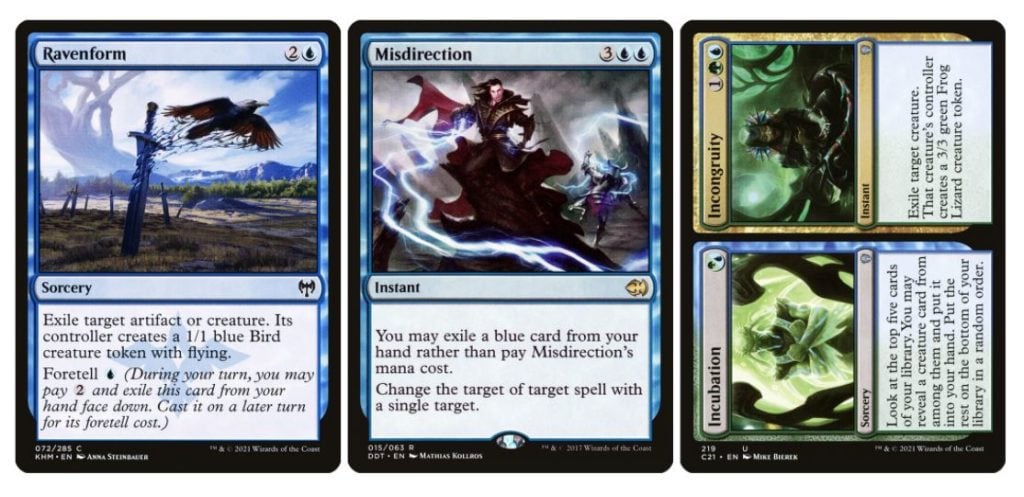
If you’re looking for something a little more aggressive, Obosh, the Preypiercer is perfect for building a unique aggro deck. My good friend Ian (@MartialFacts) created a Greven, Predator Captain deck, using the Hellion Horror as their companion. The result is a unique build that can double Greven’s damage output when needed, all while playing unusual and interesting cards. “There are quite a few cards in there that are out of reach in any other environment,” says Ian, ever the fan of old and obscure cards. “Plus, I get to play Hatred.”

Brew Outside The Archetype Box
Some archetypes are synonymous with specific colors: Spellslinger usually involves blue, Landfall is typically green, and Reanimator almost always involves black. This needn’t be the case for every deck, however, and thinking outside of the usual color constraints could lead to some of the more interesting decks you’re likely to see.
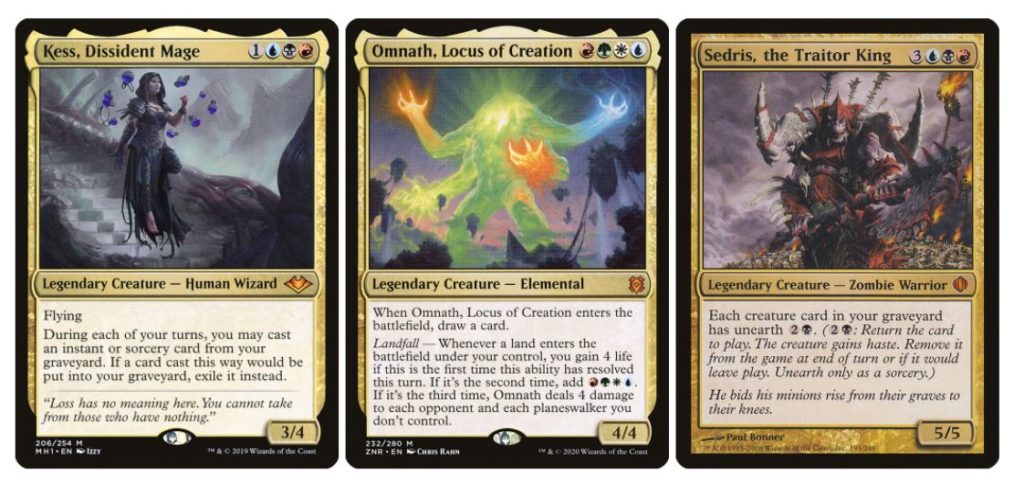
The key is to find the right commander for the job. This can take some time, as they can be difficult to spot. My best suggestion for finding the right one is to scour EDHREC’s color pages (here’s the Gruul one, for instance) for a commander that catches your eye — one that doesn’t feel like a perfect fit for its colors.
I found myself growing tired of the usual Spellslinger play patterns, so I thought I’d shake it up by shifting into an unconventional color pairing. After some searching, I decided to build a budget Wort, the Raidmother Spellslinger deck that perfectly suited my needs.
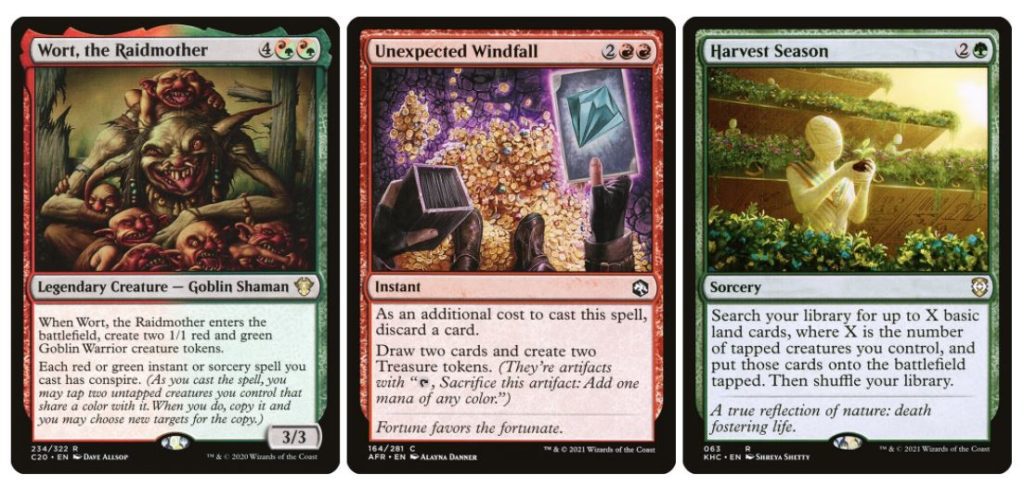
Because I couldn’t add any blue cards to the deck, I was forced to move away from my usual approach. My go-to list of Spellslinger staples couldn’t help me: I couldn’t add all of the blue cantrips, counterspells were almost completely off the table, and I was left with very few ways to protect both my engine and payoffs. The result? One of the most fun decks I’ve possibly ever piloted! Conspire is a really satisfying mechanic that doesn’t get enough love, and copying spells is one of the sillier things you can do while still putting up results.
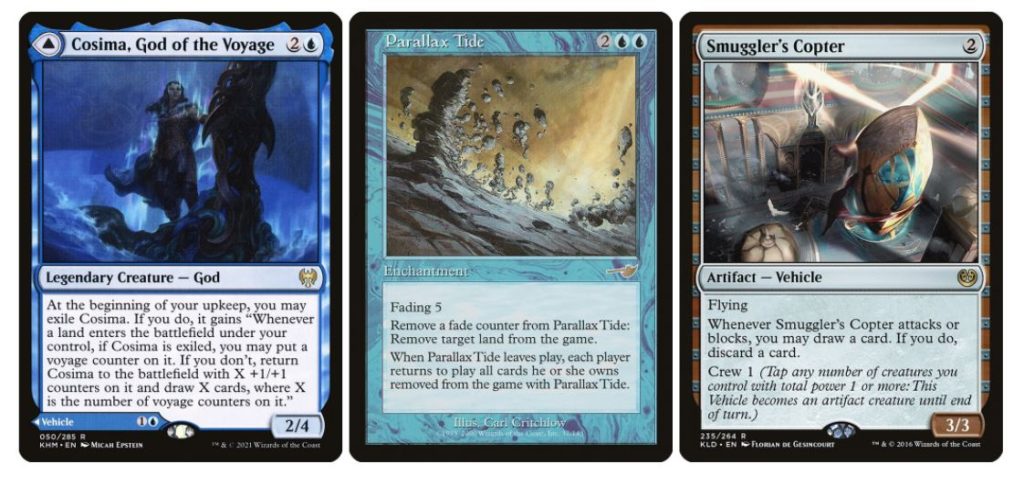
Cosima, God of the Voyage is another example of a commander that can be built in unusual and compelling ways. My good friend Daithí (pronounced daw-hee) has a Cosima deck whose main themes are Landfall and Vehicles — two archetypes you wouldn’t typically associate with blue.
“So, the deck came about when playing Cosima in my Amareth Blink deck, and I realized that I never played her as The Omenkeel,” they said. “I felt bad about it, so I decided she needed to helm her own deck. It became a weird Vehicle & Landfall deck that is absolutely hilarious fun to play.” As someone who plays against it regularly, I can confirm that it’s also a blast to play against.
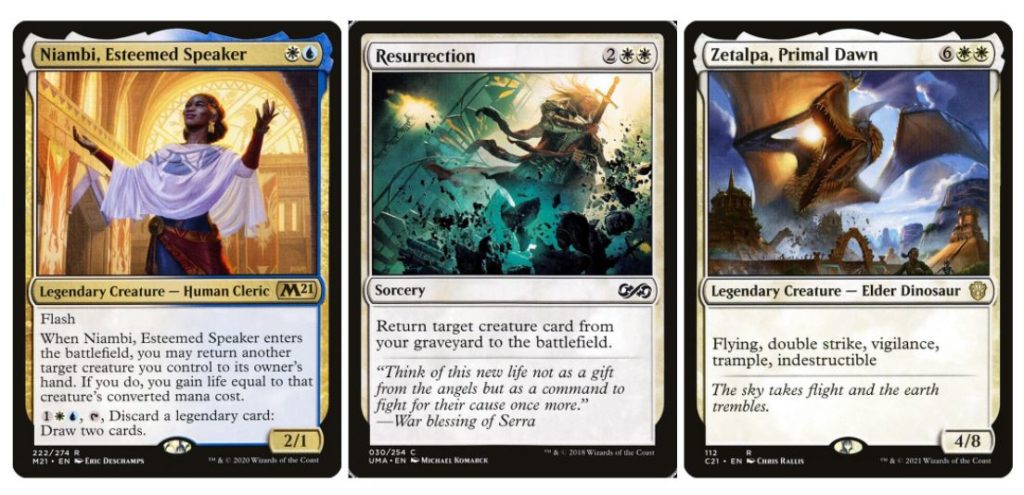
As for Reanimator, Angelo Guerrera (@TheJesguy) delved deep into Niambi, Esteemed Speaker as a viable Reanimator commander over on EDHREC. “I love seeing commanders utilized in really fun ways, especially when they make me feel like the deck they’re leading could be a Time Spiral-like list in terms of the color-bending feel.”
These are just three different examples of how you can bend the perception of how decks are supposed to look or operate. As I mentioned earlier, however, commanders like these can be hard to find. What if you can’t find one that takes your fancy? The answer is simple: take a popular commander and apply a new take!
Built Different
Many commanders become popular because of their flexibility. Just take a look through the Top Commanders page on EDHREC and you’ll see exactly what I mean. Underneath each commander is a dropdown where you can filter cards by theme; this gives you a snapshot of the different ways each commander can be built.
Atraxa, Praetors’ Voice, for example, has a whopping 32 themes listed. This means that other players have built 31 different kinds of Atraxa decks that weren’t Superfriends. If that’s possible, then the sky’s the limit! Why not try to build Muldrotha, the Gravetide Cycling, Kenrith, the Returned King Reanimator, or even Sisay, Weatherlight Captain Primal Surge Shrines?
Budget Limit
One issue that a lot of players encounter upon choosing a commander is finding ways to differentiate their deck from others’ (something which I can relate to a lot). Building a deck with unfettered access to the entirety of Magic’s card pool makes this hard to avoid. But there’s a very effective remedy that also happens to be economical: imposing a budget limit.
I regularly build decks with a budget limit because I want my decks and ideas to be as accessible as possible. I also don’t want to build the subjectively “best” version of a deck, because I value individuality over efficiency. None of my decks has ever matched my opponents’ expectations upon seeing my commander(s), and that’s often down to these limits.

Setting a budget limit is also great for when you want to “throttle” a deck. If you set a budget limit of $100, for example, your deck can only reach a certain power level. This is something I’ve recommended to players time and time again, and many of them have been extremely happy with the results. If you’re looking for an example, here’s my $150 Teshar, Ancestor’s Apostle deck from earlier this year. It’s powerful, but it’s kept honest through the budget. You could even save up to $50 just by removing the four most expensive cards in the deck!
Whether you’re suffering from brewer’s block, you’re looking for your next spicy brew, or you just need some inspiration, I hope you find something here to get those cogs turning!
Do you have any decks that you’ve built using restrictions like these? Do you have any more creative approaches to deck building? I’d love to hear about them over on Twitter! Here’s to your next sweet brew!

Scott is an Irish content creator and the Head of Budget Magic for the Izzet League. He focuses on affordable decks in Pioneer, Modern, and Pauper, particularly ones that stray from the mainstream. When he’s not writing about his favorite decks, he can be found talking incessantly about them on Twitter and on The Budget Magic Cast.

